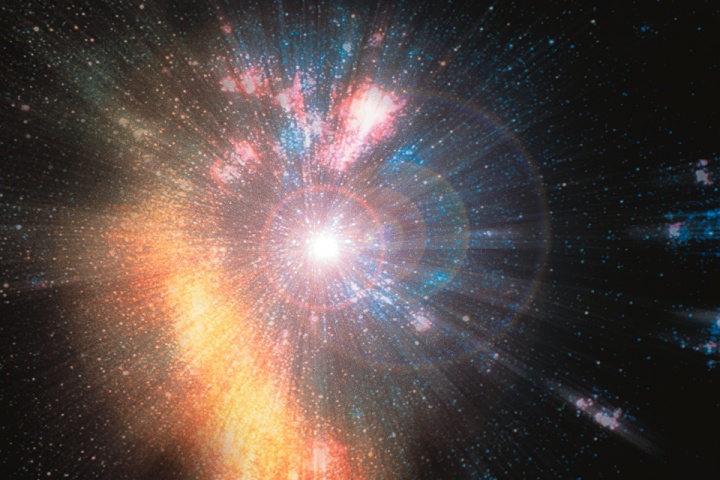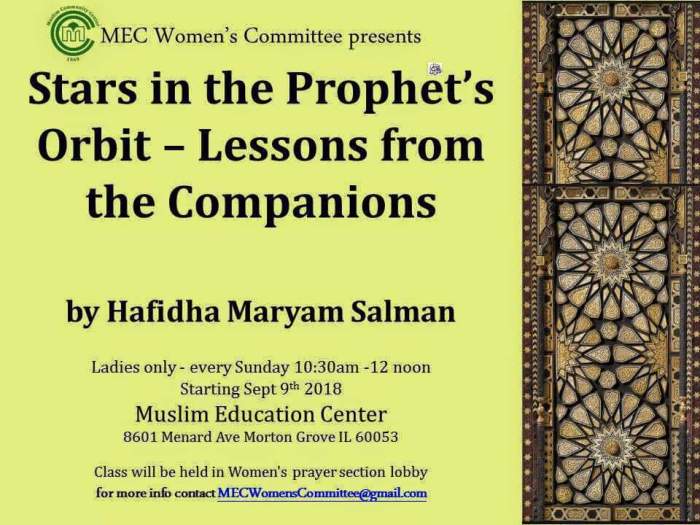Stars in the prophets orbit – Stars in the prophets’ orbit have captivated the human imagination for centuries, illuminating our path through religious texts, literature, art, and scientific inquiry. From the guiding star that led the Magi to the manger to the celestial bodies that inspired the prophets, these celestial wonders have left an indelible mark on our collective consciousness.
Throughout history, stars have served as symbols of divine guidance, cosmic order, and the mysteries of the universe. They have guided travelers, inspired poets, and shaped our understanding of our place in the cosmos.
Defining the Stars in the Prophets’ Orbit
The phrase “stars in the prophets’ orbit” refers to individuals who are believed to possess exceptional spiritual or religious guidance. It is a metaphor often used in religious and cultural contexts to describe those who are considered to have a close connection to divine or supernatural forces.
The interpretation of this phrase can vary depending on the religious or cultural context in which it is used. In some traditions, it may refer to prophets or religious leaders who are believed to have received divine revelation or guidance.
In other contexts, it may refer to individuals who are seen as having a special ability to perceive or communicate with the spiritual realm.
Evolution of the Phrase
The phrase “stars in the prophets’ orbit” has evolved over time, with its meaning and significance shifting depending on the historical and cultural context. In ancient times, it may have been used to describe individuals who were seen as having a connection to the divine or supernatural.
In more modern contexts, it may be used to refer to individuals who are seen as having exceptional spiritual or religious insight or guidance.
Historical and Literary References
Stars in the prophets’ orbit have been a recurring theme in literature and history. These celestial bodies have been used as symbols of guidance, hope, and divine intervention.
One notable example is the Star of Bethlehem, which is mentioned in the Christian Bible as a guiding light that led the Magi to the birthplace of Jesus Christ. This star has been interpreted as a symbol of God’s guidance and protection.
Other Examples
- In ancient Egypt, stars were associated with the gods and goddesses. The pharaohs were believed to be descended from the stars and were often depicted with stars on their crowns.
- In Greek mythology, the constellation Orion was said to be a giant hunter who was placed among the stars by Zeus. Orion’s belt, a prominent star formation, has been used as a navigational aid for centuries.
- In the Islamic tradition, the Prophet Muhammad is said to have ascended to heaven on a winged horse named Buraq. During his journey, he passed by the stars and met with various prophets.
These examples demonstrate the rich historical and literary significance of stars in the prophets’ orbit. These celestial bodies have been used to represent divine guidance, protection, and the connection between heaven and earth.
Religious and Spiritual Implications

Stars have held significant religious and spiritual significance throughout history, often associated with celestial bodies, prophecy, and divine guidance. In the context of prophets, stars played a pivotal role in shaping their messages and influencing their followers.
The belief in celestial guidance through stars is rooted in the notion that the universe is an orderly and purposeful creation, governed by divine forces. Many cultures viewed stars as messengers or signs from the divine, conveying important messages or guiding individuals towards their destiny.
Stars and Divine Guidance
In many religious traditions, stars were seen as a means through which divine beings communicated with humans. In ancient Egypt, for example, the priests studied the movements of stars to determine the will of the gods and predict future events.
Similarly, in the Bible, stars are often associated with divine guidance and protection. The Star of Bethlehem, for instance, is believed to have led the Magi to the newborn Jesus, symbolizing the divine favor and protection bestowed upon him.
Stars and Prophecy, Stars in the prophets orbit
Stars also played a significant role in prophecy, providing signs or omens that foretold future events. In the Book of Daniel, for example, the prophet Daniel interprets a dream involving four beasts, which are identified as representing future world powers.
In Islam, the Prophet Muhammad is said to have ascended to heaven on a celestial steed named Buraq, passing by various stars and celestial bodies on his journey. This event, known as the Isra and Mi’raj, is seen as a symbolic representation of the Prophet’s spiritual ascent and connection to the divine.
Influence on Art and Culture

The celestial presence of stars in the prophets’ orbit has profoundly influenced human artistic expression throughout history. These celestial bodies have served as potent symbols, inspiring awe, wonder, and creativity in artists, musicians, and other cultural figures.
In art, stars have been depicted in countless masterpieces, from ancient cave paintings to modern abstract works. They often symbolize divine guidance, hope, and the vastness of the universe. For instance, the Star of Bethlehem in Christian art represents the birth of Jesus and the guidance of the Magi.
Similarly, in Islamic art, stars are commonly used in geometric patterns and calligraphy, representing the celestial realm and the divine order.
Music
In music, stars have also played a significant role. From traditional folk songs to classical compositions, stars have been a source of inspiration for musicians. The celestial bodies have been used to evoke emotions of wonder, longing, and hope. For example, the famous lullaby “Twinkle, Twinkle, Little Star” celebrates the beauty and mystery of the night sky, while the classical piece “Clair de Lune” by Claude Debussy captures the ethereal glow of stars in the moonlight.
Exploring the celestial tapestry, we marvel at the celestial bodies that orbit the prophets. Their ethereal glow illuminates our path, much like the insights gleaned from AP Chemistry Unit 5 MCQ . Through these questions, we delve into the intricate workings of matter, gaining a deeper understanding of the universe’s celestial dance.
Other Cultural Expressions
Beyond art and music, stars have influenced various other cultural expressions. In literature, stars have been used as metaphors for characters, events, and themes. For instance, in Shakespeare’s “Romeo and Juliet,” the lovers are compared to “two stars that run their course.”
In astrology, stars are used to interpret human personality traits and predict future events.
In conclusion, stars in the prophets’ orbit have had a profound influence on human art and culture. They have inspired countless creative works, serving as symbols of hope, guidance, and the vastness of the universe.
Scientific and Astronomical Perspectives: Stars In The Prophets Orbit

Scientifically, stars are massive, luminous balls of plasma that generate energy through nuclear fusion reactions in their cores. They are the building blocks of galaxies and play a crucial role in the formation and evolution of planets. Planets, on the other hand, are celestial bodies that orbit stars and do not possess their own light source.
Astronomically, the concept of stars in the prophets’ orbit is not directly supported by modern scientific understanding. Stars are not celestial bodies that revolve around planets, but rather the opposite. Planets, including Earth, orbit stars due to the gravitational pull exerted by the star’s mass.
Accuracy and Limitations
While the scientific and astronomical perspectives provide a comprehensive understanding of stars and planets, they have limitations in relation to the concept of stars in the prophets’ orbit. These perspectives focus on the physical and observable characteristics of celestial bodies, and do not encompass religious or spiritual beliefs that may assign different meanings or significance to these celestial bodies.
It is important to note that the concept of stars in the prophets’ orbit is primarily rooted in religious and cultural contexts, rather than scientific or astronomical ones. Therefore, its interpretation and understanding may vary depending on the specific religious or cultural framework in which it is discussed.
Modern Interpretations and Applications

In contemporary society, the concept of stars in the prophets’ orbit continues to resonate and inspire diverse interpretations and applications. Modern thinkers and practitioners explore the metaphorical and symbolic significance of this idea, drawing parallels between celestial bodies and the guidance, wisdom, and transformative potential found in religious and spiritual traditions.
Contemporary Artistic Expressions
- Literature:Contemporary poets, novelists, and playwrights use the imagery of stars to explore themes of destiny, faith, and the search for meaning. For example, in the novel “The Alchemist” by Paulo Coelho, the protagonist follows a personal legend guided by the stars.
- Music:Musicians and composers incorporate celestial motifs into their works to evoke feelings of wonder, awe, and transcendence. The song “Starry Night” by Don McLean draws inspiration from Vincent van Gogh’s famous painting, capturing the beauty and mystery of the night sky.
- Visual Arts:Artists use stars as symbols of hope, inspiration, and divine presence. In the painting “Starry Night” by Vincent van Gogh, swirling stars and luminous skies convey the artist’s emotional and spiritual connection to the cosmos.
Essential FAQs
What is the significance of stars in the prophets’ orbit?
Stars in the prophets’ orbit have been interpreted as symbols of divine guidance, celestial order, and the mysteries of the universe.
How have stars influenced art and culture?
Stars in the prophets’ orbit have inspired countless works of art, music, and literature, serving as symbols of hope, inspiration, and the vastness of the cosmos.
What is the scientific perspective on stars and their relationship to planets?
Scientifically, stars are celestial bodies that emit light and heat due to nuclear fusion reactions. Planets, on the other hand, are non-luminous bodies that orbit stars.